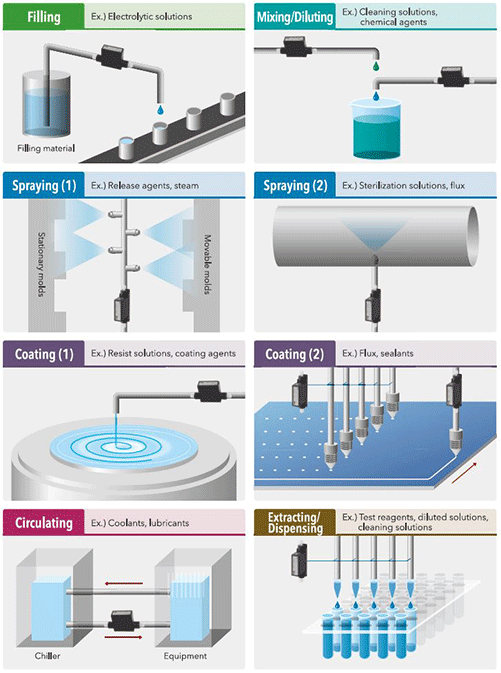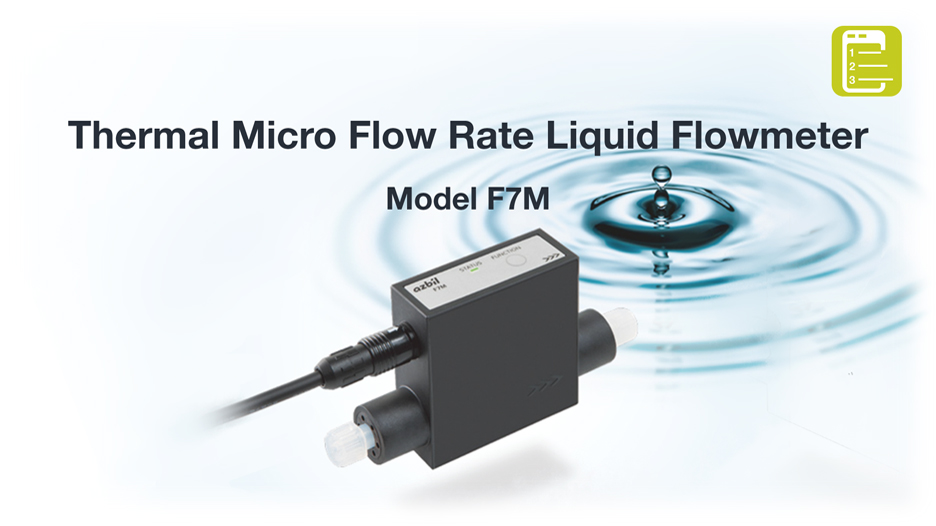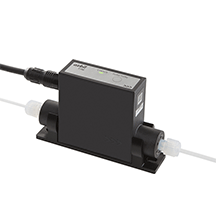
Micro Flow Rate Liquid Flow Meter Model F7M

By combining a thermal MEMS sensor and a highly corrosion-resistant quartz glass flow path, the product can measure micro flow rates liquid flow of under 50 mL/min with a high degree of repeatability, which would be a difficult for traditional measurement methods.
Product development was based on the concept of adopting a measurement method that is minimally susceptible to changes in the state of the fluid (e.g., bubbles, pulsation, fluid temperature changes), and making the product user-friendly, with easy-to-use correction functions for measured fluids (correction based on the thermal conductivity of the fluid).
Measuring the instantaneous and integrating flow rates instead of previous methods (e.g., measuring the pump rotation speed, measuring the weight, or managing the fluid supply time) contributes reliable quality management and detection of anomalies in process based on measured values.
Products Introduction Video
Measures 50 mL/min or lower
Features the thermal flow measurement principle using MEMS sensing technology.
Measuring micro flow rates under 50 mL/min of liquid, which traditionally has been difficult, is now possible.
(Measurement range: 0.1 to 10 mL/min, 0.3 to 30 mL/min, 0.5 to 50 mL/min)
Compact, light-weight, and easy to install
This model is more compact and lighter than its predecessors.
By using the mounting bracket (including in a package), it can be easily installed on a surface (for horizontal pipe connection).
It can also be installed for vertical pipe connection.
A separate converter (amplifier) is not required.
Mounting Orientation
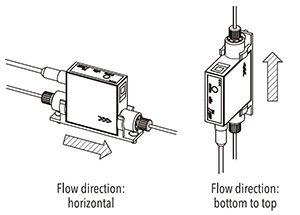
Straight flow path
The straight flow channel means pressure loss is lower and cleaning is easier, with no puddles of liquid.
Flexible installation and wide range of fluids
Compliant with IP65 protection rating.
Exterior contains no metal, providing improved resistance to corrosive fluids, allowing use in environments with liquid spray.
Can be used for a variety of fluids, so long as they do not corrode fused quartz glass (the material of the flow path) or fluororesin (the material of the fitting).
The sensor does not come into contact with any fluids.
Flow Volume Measured: Comparison with Other Methods
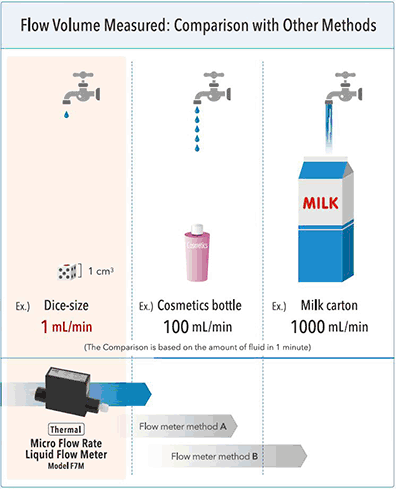
Measurement principle
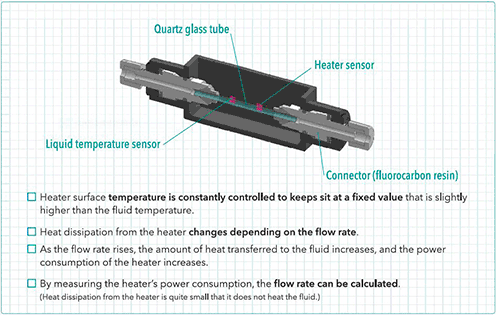
Output Characteristics Before and After Correction
The measurable range varies according to the thermal conductivity of the fluid, but the output characteristics can be adjusted by using the correction function. (See the conceptual diagrams below.)
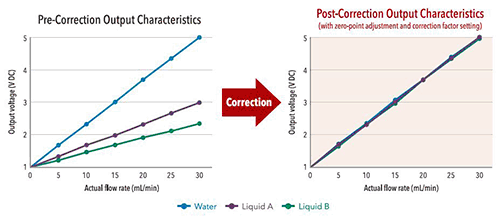
Application
